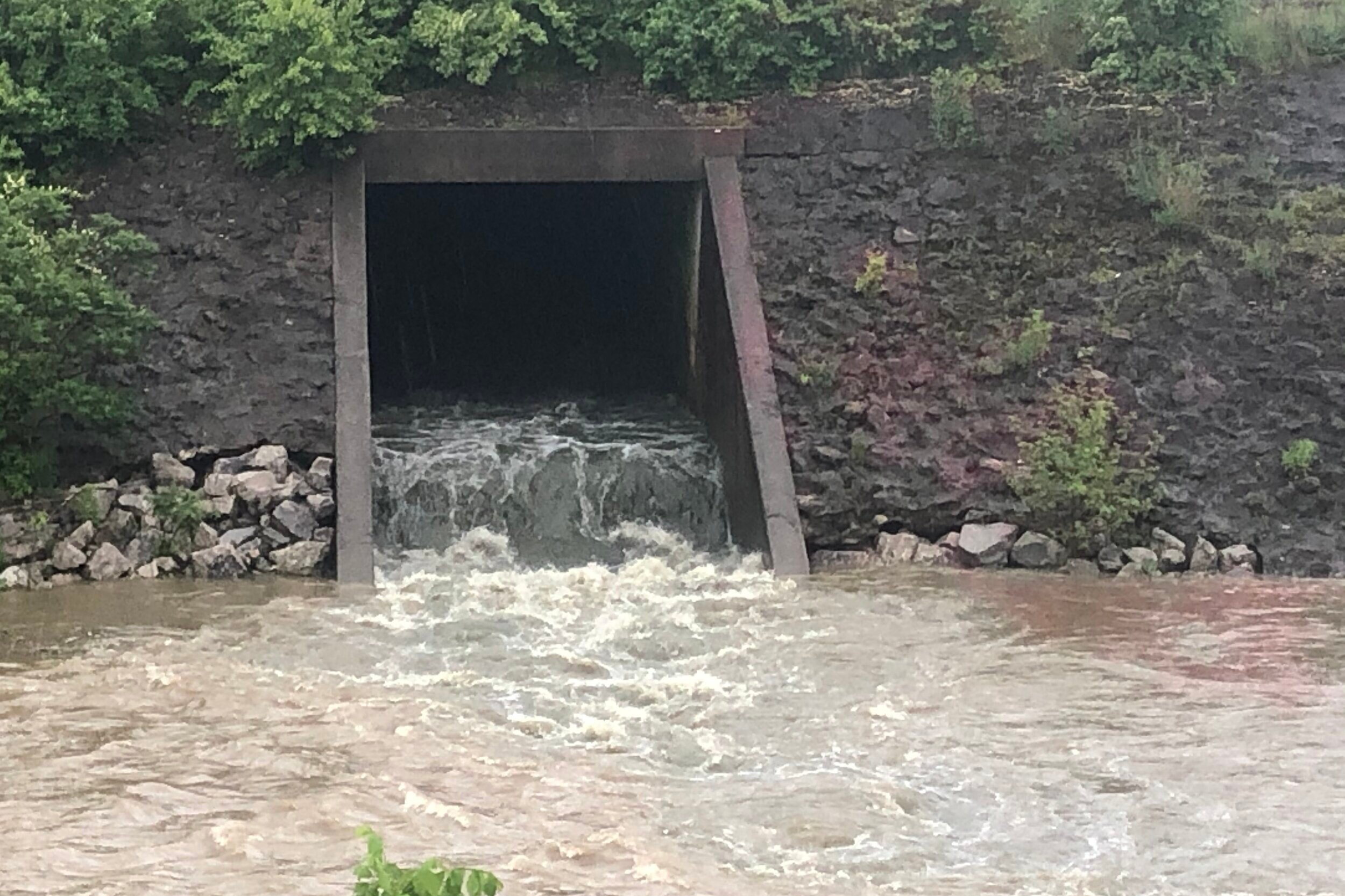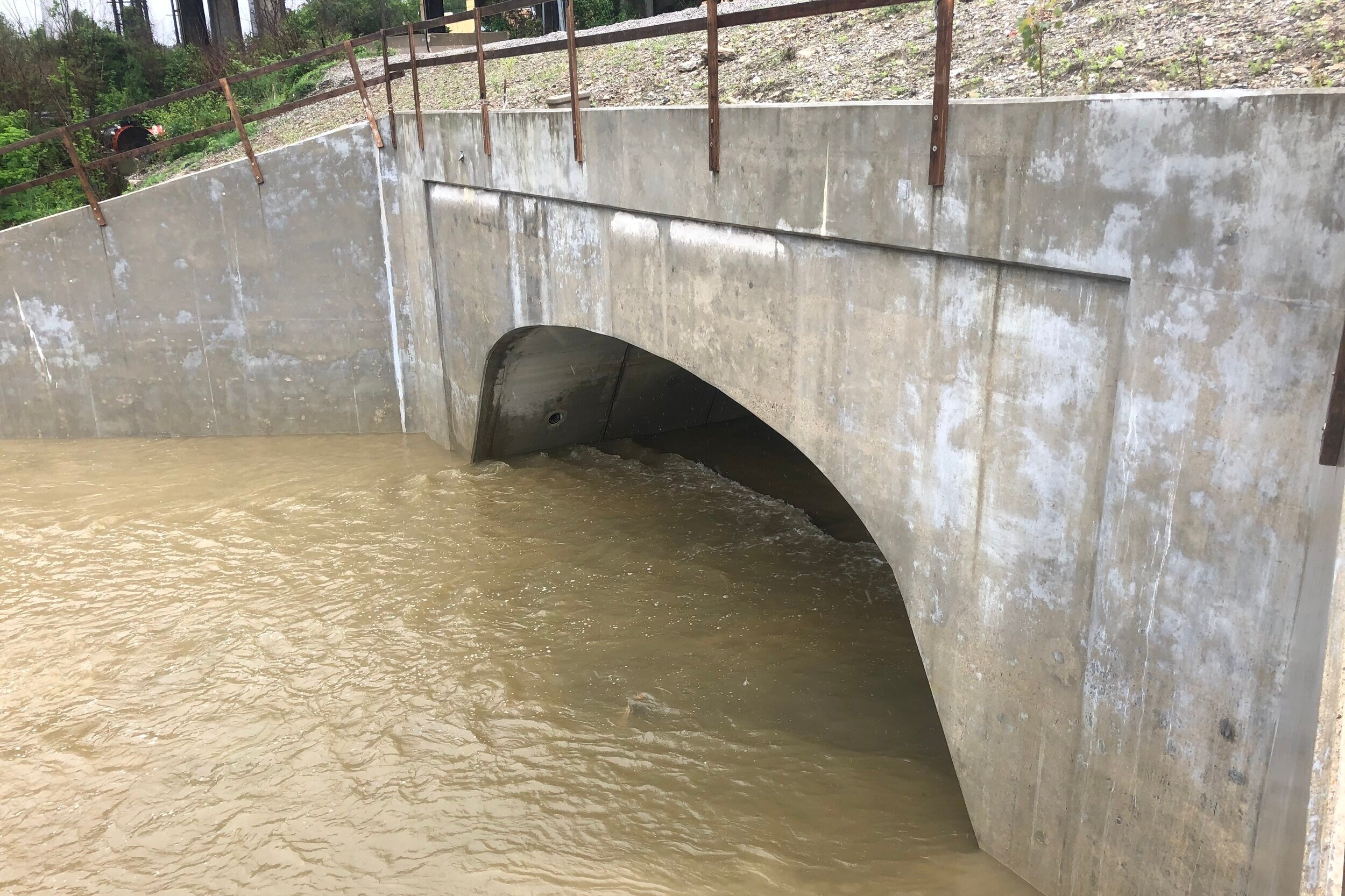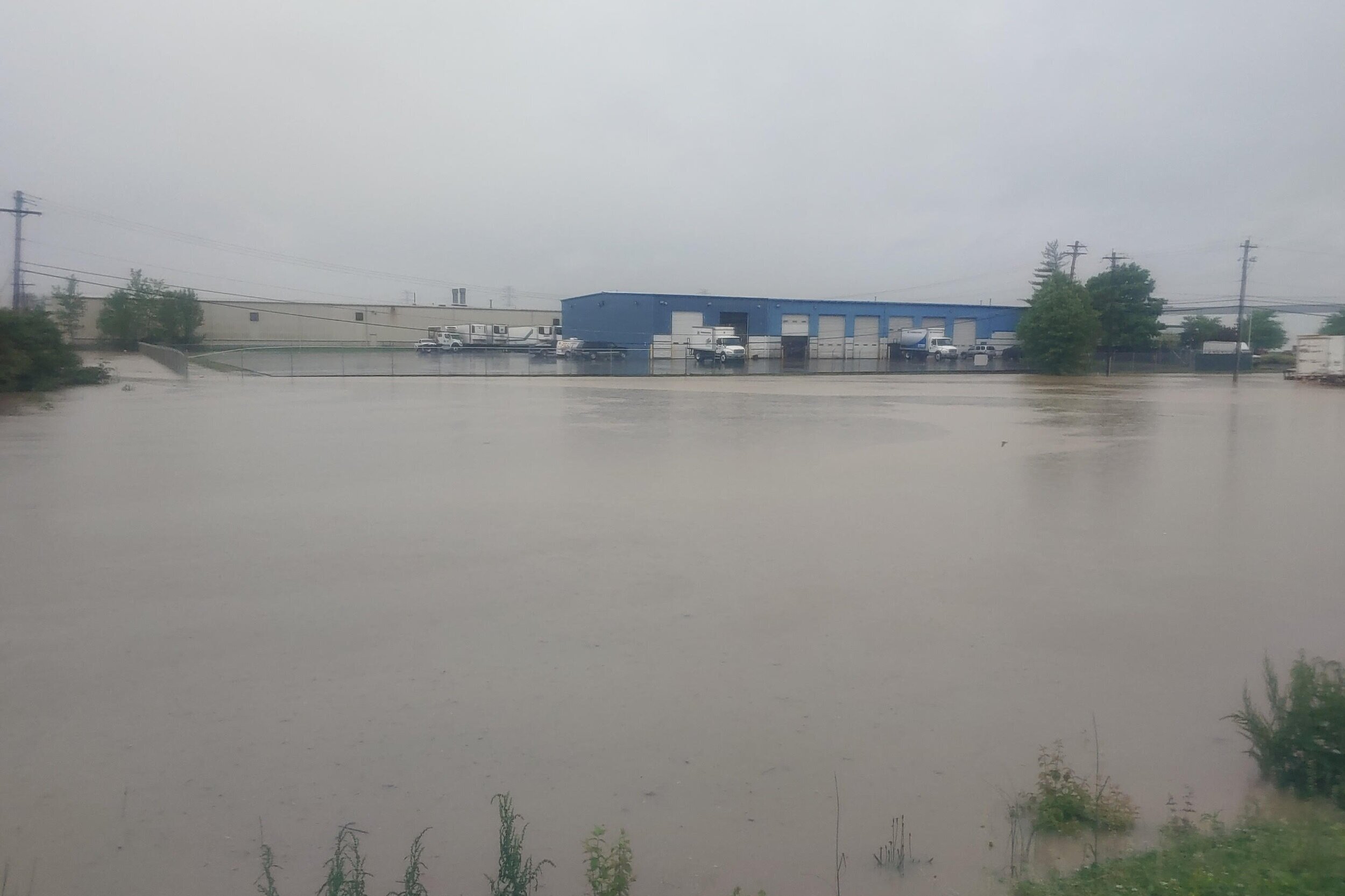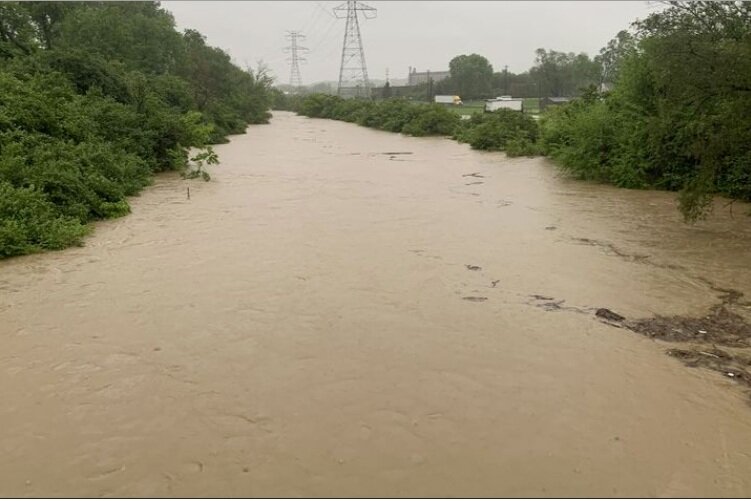Source: https://msdgc.vieuxinc.com/
Where were you during the record breaking rainfall this past Monday, May 18, 2020? We hope that you and your property weathered the “storm” and record breaking precipitation. What did all that rain do to the streams near you? We asked folks to submit pictures of the Mill Creek in their neighborhood and received a lot of responses. See for yourself!
Source: https://waterdata.usgs.gov/nwis/uv?site_no=03259000
Historic rainfall means historic stream flow. All this rainfall eventually finds its way into our streams. A rule of thumb is that for each 1” of rain on saturated soil, a 4’ rise in water levels results in our streams.
Keeping in mind we had multiple days of rain, you can understand the 16 foot increase in the Mill Creek on May 18th.
Fun Fact: You can monitor the rain on the Mill Creek yourself using the USGS (U.S. Geological Survey) stream gage in real time.
This chart shows a typical stream flow at about 100 cfs (cubic feet per second). This past week, the flow rate increased to 9,000 cfs in just two days! That 100 fold increase of flow pummels the stream with 280 tons (the weight of 7 loaded 18-wheeler trucks) EVERY SECOND! How can a stream possibly withstand that force?
Stream restoration projects address heavy rainfall events like May 18th. At the Mill Creek Alliance, we work with partners and communities to address opportunities and challenges in the Mill Creek Watershed.
Look at these photos before and during the May 18 record rainfall along the Mill Creek Greenway Trail at Seymour Avenue near Caldwell Park It’s a short distance from the stream gage and the site of a 15 year old Metropolitan Sewer District of Greater Cincinnati (MSD) restoration project.
You can see some of the standard features of stream restoration and stabilization: (1) The streambank is “armored” with heavy rock. (2) Deep-rooted native vegetation complements the stone work, traps sediment, and further “bioengineers” a stable streambank and (3) Rock vanes extend into the stream to dissipate the immense energy of flowing floodwaters.
Here’s a look at another Mill Creek Alliance restoration project upstream at the Evendale Commons in the Village of Evendale. Before a flood, a stream channel is where a stream typically flows most of the year including the dry summer months.
However, during a flood, streams need connections to a wide stream corridor and a floodplain where flood waters can safely be contained away from people and property.
We’re glad to see our projects hard at work as part of the natural infrastructure of the Mill Creek Watershed - a natural and community asset.
The Mill Creek Alliance thanks you for your ongoing support and intererest. Stay safe everyone!
Lots of people share MCA’s love for water and the Mill Creek. Take a peek at one of our Facebook Friend’s video sharing how he dealt with this week’s precipitation!










